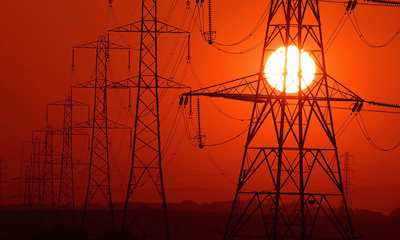National Grid finance chief Andrew Bonfield says solar panel costs are falling so rapidly that energy from the sun is expected to be one of the most cost-effective ways to power homes within 18 months.
With home storage of electricity and using battery technology fast advancing in the United States, he said that the prospect of pulling the plug on a power company and going off-grid could become a reality for all in the UK within five years.
“From a consumer’s point of view, the solar on the rooftop is going to be the baseload,” Steve Holliday, the transmission network’s chief executive, said. “Centralised power stations will be increasingly used to provide peak demand.”
Mr Holliday, who is scheduled to leave National Grid next year after 15 years with the business, said that energy markets were “clearly moving towards much more distributed production and towards microgrids” — a big break from the past, when big power stations delivered centralised power to consumers and businesses on demand.
“This industry is going through a tremendous transformation,” he said. “We used to have a pretty good idea of what future needs would be. We would build assets that would last decades and that would be sure to cover those needs. That world has ended. Our strategy is now centred on agility and flexibility, based on our inability to predict or prescribe what our customers are going to want.”
National Grid, the operator of Britain’s gas and electricity transmission and distribution network, is overseeing an overhaul of the country’s energy network to accommodate sources of renewable electricity, including domestic solar electricity production and onshore and offshore wind. It predicts that by 2020 small-scale distributed generation will represent a third of total capacity in Britain.
Mr Holliday made his remarks in an interview with World Energy Focus, a publication of the World Energy Council, an alliance of 90 nations that collaborate on energy policy matters. “The amount of solar being added to the system is incredible,” he said. “[There was] 1,500 megawatts in the first three months of this year. That’s the capacity of two power stations. I made a comment to the energy minister four years ago that there was little probability we would have 20,000MW of solar in the UK. Now three of our scenarios have more than 20,000MW of solar by 2035.”
Britain has slashed the subsidies available for solar energy. Last month, ministers said that the 90 per cent cut in the “feed-in tariff” for generating power from new rooftop solar panels was necessary to prevent rising green energy payments from hitting consumer bills. The cut from 12.9p per kilowatt hour to 1.63p is set to come into force in January for all new solar projects.

